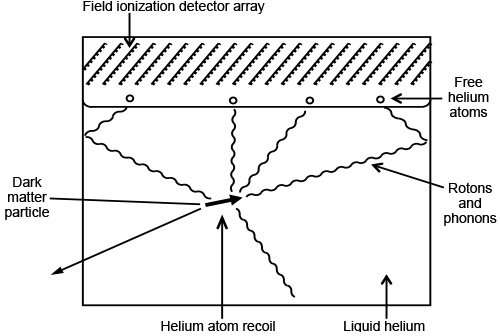Again, this is astrophysics rather than astronomy but never mind, its the universe. The claim is that scientists are one step closer to defining dark matter – go to https://phys.org/print428759704.html … where we are told the search is on for dark matter – where it is and what it might be. Dark matter, we are led to believe, makes up to 85 per cent of all matter in the universe. We are apparently another step closer to discovering how to detect dark matter and to define it more accurately. What kind of particles are involved?
At https://phys.org/print428762581.html … physicists describe new dark matter detection strategy. The detection will use superfluid helium to trap particles with lower mass which is a different approach entirely as particles with larger mass have previously been the object of research – to no avail …
 … the new strategy is designed to detect interactions between dark matter particles and a tub of superfluid helium. Both research papers are in November's issue of Physical Review Letters (2017). Physicists are 'fairly certain' that dark matter must exist in some form. The way in which galaxies rotate and the degree to which light bends as it travels through the universe suggest there is some kind of unseen stuff out there throwing its gravity round. Tell that to the speed of gravity people (see earlier post today).
… the new strategy is designed to detect interactions between dark matter particles and a tub of superfluid helium. Both research papers are in November's issue of Physical Review Letters (2017). Physicists are 'fairly certain' that dark matter must exist in some form. The way in which galaxies rotate and the degree to which light bends as it travels through the universe suggest there is some kind of unseen stuff out there throwing its gravity round. Tell that to the speed of gravity people (see earlier post today).
